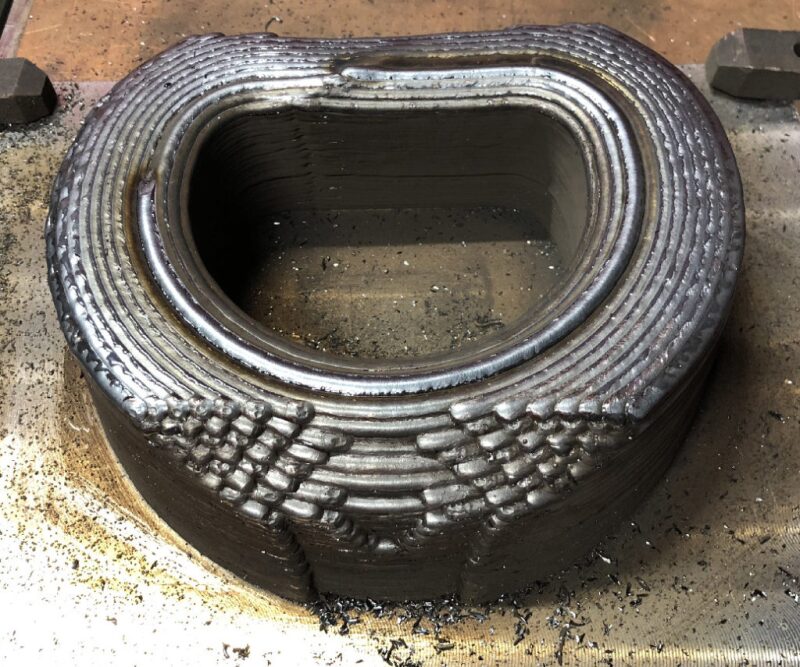Huisman and RAMLAB, a manufacturer of certified metal parts on demand through additive manufacturing, have initiated a project to produce a large offshore crane hook using the 3D printing technique known as “wire and arc additive manufacturing (WAAM). The hook, which is based on a Huisman four-prong hook design, will use 3D printing techniques so that the product will be hollow, significantly saving on material usage and production lead time.
An important benefit for 3D-printed larger crane hooks is the significant reduction in delivery time at a cost that competes with the typical manufacturing via forgings and castings, and a more consistent level of quality.
The hook will measure over 1×1 m in outer dimensions and weigh close to 1000 kg, making it the world’s largest 3D-printed steel product in terms of weight. Its safe working load (SWL) will be 325 metric tons. At the beginning of this year, Huisman successfully load-tested a 3D-printed offshore crane hook with an SWL of 80 metric tons which also passed quality control checks.

Classification societies, DNV GL, Bureau Veritas, and ABS, have joined this project. In close collaboration with experts from these class societies the 3D-printed offshore crane hook will not only receive triple certification, but a significant step can be made in adopting common rules and guidelines for WAAM for 3D-printed products for the maritime and offshore industry. voestalpine Böhler Welding has joined the consortium to provide feedstock and materials expertise. Autodesk provides support by means of additive manufacturing software.
WAAM uses an electric arc as a heat source and wire, instead of powder, as feedstock. An advantage of the technology is that it can be implemented using off-the-shelf welding equipment, which eliminates the need for a more expensive powder bed 3D printing system.
Huisman said WAAM allows it to manufacture other components with complex shapes, short delivery times, or local alternative material properties, to improve wear and corrosion resistance. The positive WAAM test earlier this year enables the company to manufacture reliable components that were physically impossible or commercially infeasible to produce before. In the near future it aims to further improve the WAAM process by reducing the cost price for this technique and to increase manufacturing capabilities up to items of 2500 kg printed weight.

